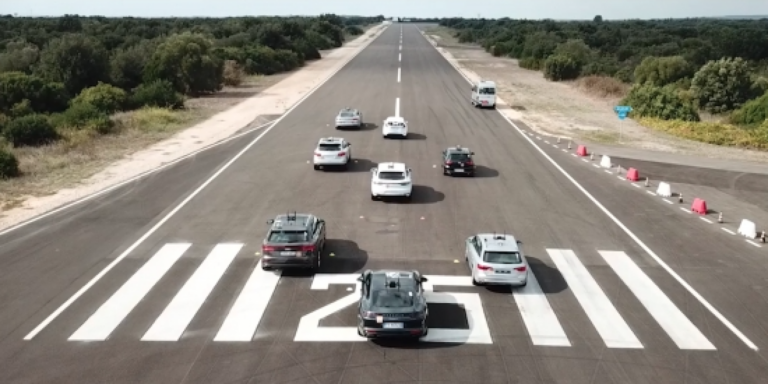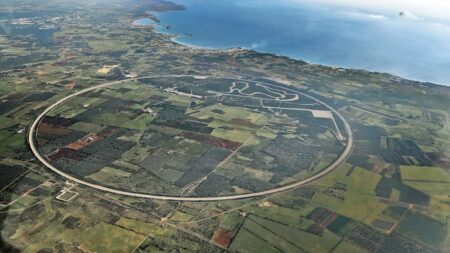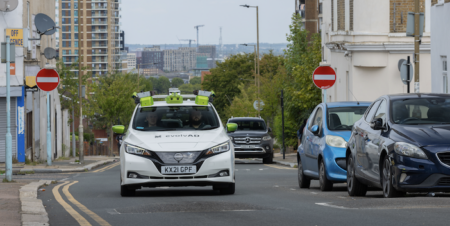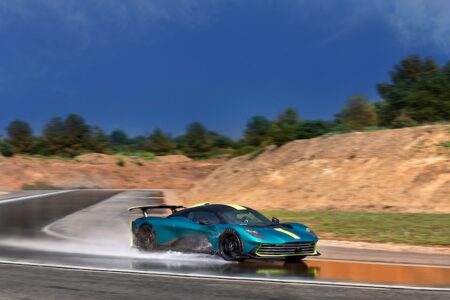AB Dynamics, an automotive test systems supplier, has collaborated with VW Group brands, Volkswagen, Audi and Porsche, to demonstrate what it says is the greatest number of vehicles to be successfully synchronised in a ‘swarm test’. The movements of seven automated vehicles were synchronised with an Ego vehicle (the vehicle under test) in a range of tests at the Nardò Technical Centre in Italy. A total of 152 tests were carried out over 11 days, including high-speed runs up to 130kmh (81mph) and ‘cutting in’ manoeuvres with vehicles as close as 1m.
“These tests were much more complex than a Euro NCAP scenario, which typically involves one target vehicle plus a guided soft target,” stated Leo Evans, senior engineer at AB Dynamics. “In the real world, interactions often involve multiple vehicles but running several automated vehicles in close proximity has challenged the industry until now, meaning human drivers were often used instead. Unfortunately, human drivers, however highly skilled, cannot always produce the repeatability needed to thoroughly investigate system behaviour, so electronic control is necessary to eliminate variation between tests.”
AB Dynamics overcame the control challenge by using a communications system that uses dual-band IP radio, providing dependable data transfer from vehicle-to-vehicle and vehicle-to-base through secure mesh networks. This setup avoids the interference and signal loss that can occur with standard WLAN technology when used with multiple vehicles, which can lead to tests being aborted.
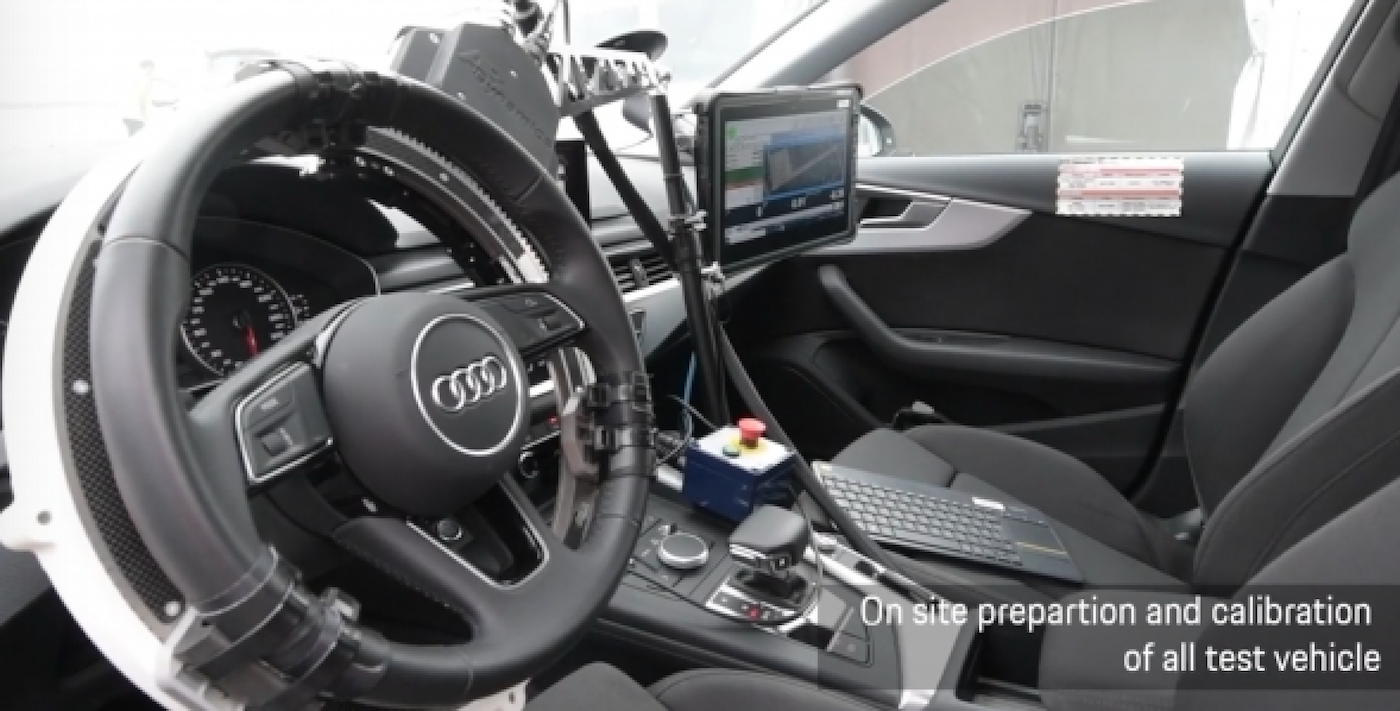
The communication platform allowed the Synchro control system to synchronise the movements of the test vehicles accurately. The movements of up to seven automated vehicles were synchronised and repeatedly with the Ego vehicle on a single trigger broadcast. In addition to the mobile control centre, the vehicles involved included: four under robot control; two under drive-by-wire control; one AB Dynamics global soft target (GST); plus the Ego vehicle.
“As the automotive industry increasingly moves from ADAS testing and validation to full vehicle autonomy, the need to control traffic swarms reliably under different test scenarios will become even more important,” stated Jeremy Ash, sales director at AB Dynamics.
As well as demonstrating the ability to accurately control and synchronise all the vehicles under test, the other ambition of the project was to use a single OpenScenario run file for both simulation and track testing.
“This capability allows a test scenario to be quickly and simply ‘copied and pasted’ from simulation to the track,” added Ash. “It allows much of the set-up work to be done virtually, making track testing more efficient, which significantly reduces cost. Perhaps most importantly, through simulation, many variations of a particular scenario can be tested virtually, with correlation taking place on the track.”


